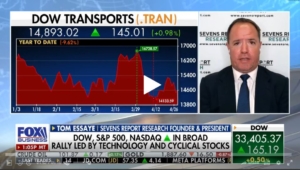Update on the Three Headwinds on Stocks
What’s in Today’s Report:
- Update on the Three Headwinds on Stocks
- Weekly Market Preview: Is Inflation Finally Peaking?
- Weekly Economic Cheat Sheet: All About Inflation (CPI Wednesday)
Futures are sharply lower following new COVID lockdowns in China.
COVID cases in Shanghai are rising again, prompting new restrictions on movement and work. Meanwhile, Beijing continues to suffer from limited lockdowns and this is compounding worries about global economic growth.
Geo-politically, Victory Day in Russia offered no notable news and there remains no end in sight to the Ukraine war.
Today there are no economic reports and just one Fed speaker, Bostic at 8:45 a.m. ET. So, we should expect technicals to dominate trading and if last week’s intra-day lows are broken in the S&P 500 and we don’t get any positive news on 1) Fed hawkishness, 2) Chinese lockdowns or 3) Russia/Ukraine, we should not be shocked if the S&P 500 move closer to a test of support at 4,000.

